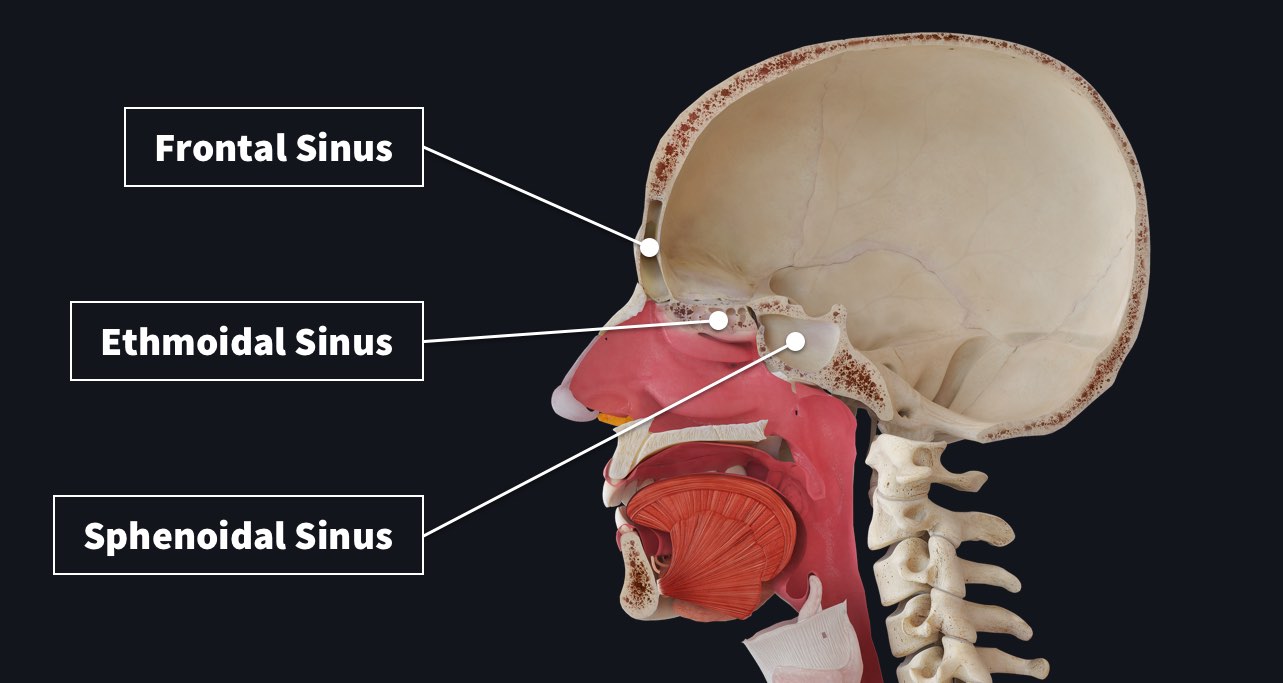
Why is the air you breathe out warm and humid? Why does your skull not drag you down, despite it being a third of your body weight? Well, it’s partly due to the 4 paired air-filled pockets located in the skull, known as the paranasal sinuses.
First identified by ancient Egyptians and then later by Greek physicians, the paranasal sinuses have various functions, such as reducing the weight of the head, humidifying and heating inhaled air and increasing the resonance of speech. They also serve as a crumple zone to protect vital structures in the event of facial trauma.
The 4 paranasal sinuses include: The frontal, maxillary, ethmoidal, and sphenoid sinuses. Each of these sinuses have ducts that drain into the naso/oropharynx
Frontal sinuses: These are found between the outer and inner aspects of the frontal bone posterior to the superciliary arches, they are funnel shaped and they drain into the nasal cavity via the frontonasal duct.
Maxillary sinuses: These are the largest of the sinuses, they are found within the maxilla. The medial wall of the maxillary sinus is made up of a combination of several bones including the maxilla, the palatine bone and inferior nasal concha.
Ethmoidal sinuses: These arise in the ethmoid bone, forming several distinct air cells with an anterior group, middle group, and posterior group. These air cells sit particularly close to the orbit.
Sphenoidal sinuses: The sphenoidal sinuses are two large, irregular cavities. They are found within the body of the sphenoid bone at the level of the spheno-ethmodial recess. Surgeons often access the pituitary gland by breaking through the thin layer of bone which surrounds the sphenoidal sinus to get to the sella turcica where the gland lies.
Viral upper respiratory tract infections can lead to thick mucus formation, resulting in blockage of the drainage system of the sinuses into the nasal cavity. This allows for bacterial overgrowth and inflammation within the sinuses, a condition known as acute rhinosinusitis. ?
Explore the world’s most advanced 3D anatomy atlas today with Complete Anatomy, featuring over 17,000 selectable structures, all in breathtaking 3D. Try it for FREE today.